Cultivate a Bat-Friendly garden
Guest Article by BC Community Bat Programs
How can you support the bats?
Spring is at our doorstep! This is the most exciting season for gardeners and nature lovers. This year, we encourage everyone to try something new– gardening for BATS!
The Okanagan is home to at least 14 different species of insect-eating bats – the highest diversity of bats in the province. Supporting pollinators in your garden helps to support bats as they prey on insects at night. Since bats are active from dusk to dawn, having night-blooming flowers in your garden attracts nighttime moths which are a great source of protein for bats. This practice is called moonlight gardening!
Join us in cultivating bat-friendly gardens and nurturing the rich biodiversity of the North Okanagan:
- Start planning early. Opt for native perennial plants – contact local plant nurseries to get your seeds.
- Choose plants with long flowering season or those that flower at different times of the year.
- Variety is key! Pick plants with different flower colour, shape, and fragrance.
- Don’t spring into garden clean up too soon. Wait until temperatures stay consistently above 10°C to start to start raking and pruning. Many pollinators like bees and butterflies are wintering in dead leaves and hollow stems of last-year plants. Bats and snakes sometimes also sleep under leaves and in wood piles.
- Invasive species like burdock can entangle bats and birds. Regularly remove weeds from your garden. If you plan on harvesting burdock, please be responsible and prune out the flowers before they go to seed and become traps for bats.
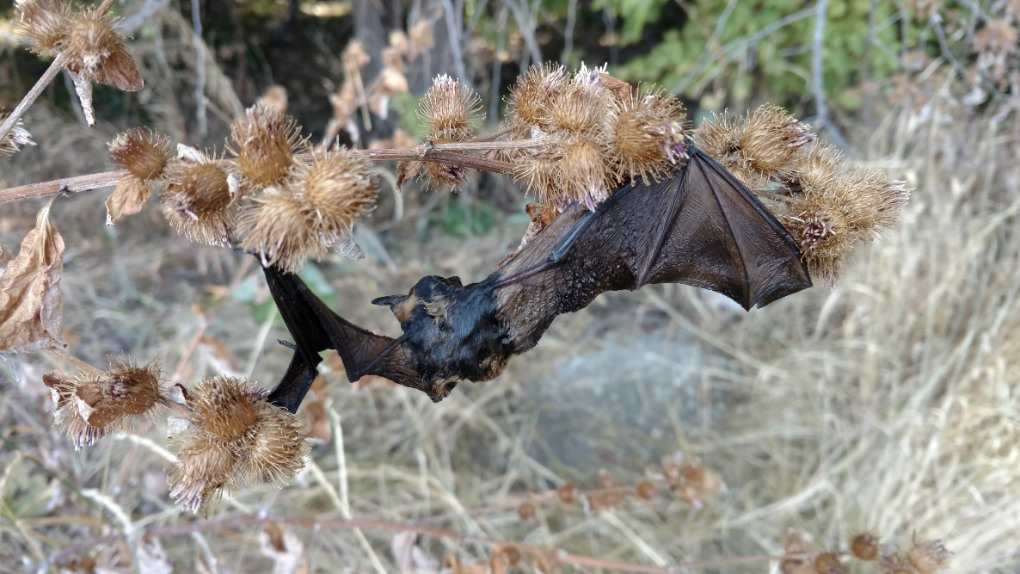
Invasive species like burdock can entangle bats
If you plan on harvesting burdock, please be responsible and prune out the flowers before they go to seed and become traps for bats.
Photo by: Ken Dzinbal
- Pesticides and chemical fertilizers kill insects and poison wildlife. Practice organic gardening by avoiding chemical products. Try composting to provide organic nutrients in your garden.
- Fact: Bats fertilize gardens with their nitrogen-rich guano (bat poop). Attract bats to have a natural source of guano fertilizer in your garden.
- Switch outdoor light bulbs to “warm” toned or filtered LEDs (under 3,000K) to reduce light pollution that harms bats and other animals. Dimmers, motion sensors, and timers can help to reduce illumination and save energy.
- Keep pets indoors or supervised outdoors to avoid predation on bats and birds.
- Keep dead-standing trees (if it is safe to do so) and mature trees on your property to provide roosting areas for hard-working bats. Peeling tree bark and bark crevices are great homes for bats.
- If you have a lake, creek or wetland by your house – great! Protect natural water-side vegetation; it provides vital food, shelter and water to wildlife.
- Consider adding a garden pond to create a biodiversity oasis in your backyard. Ponds need to be at least 3m wide to serve as drinking sources for bats.

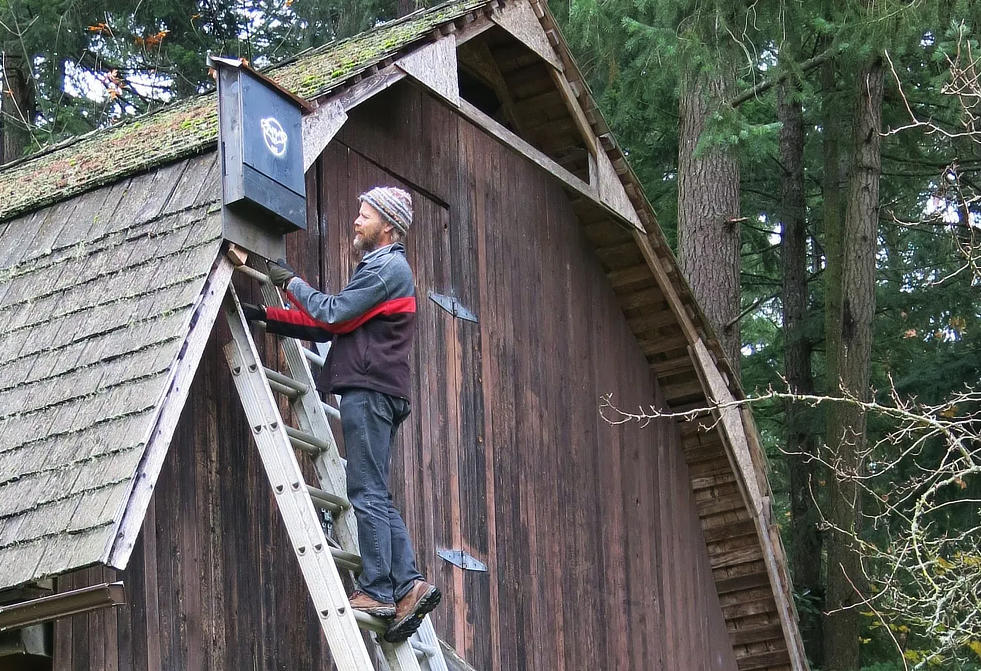
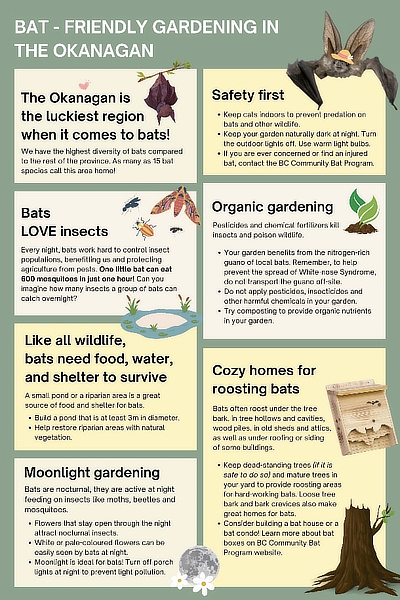
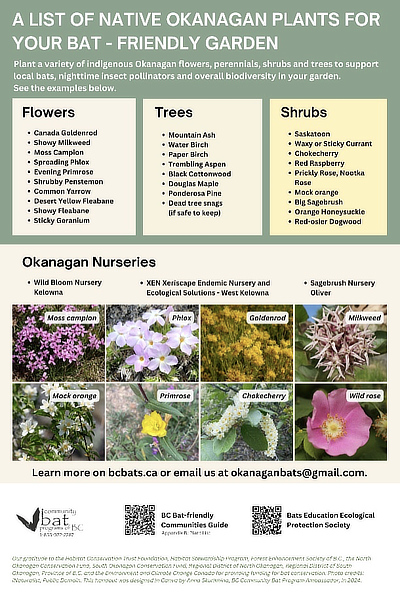
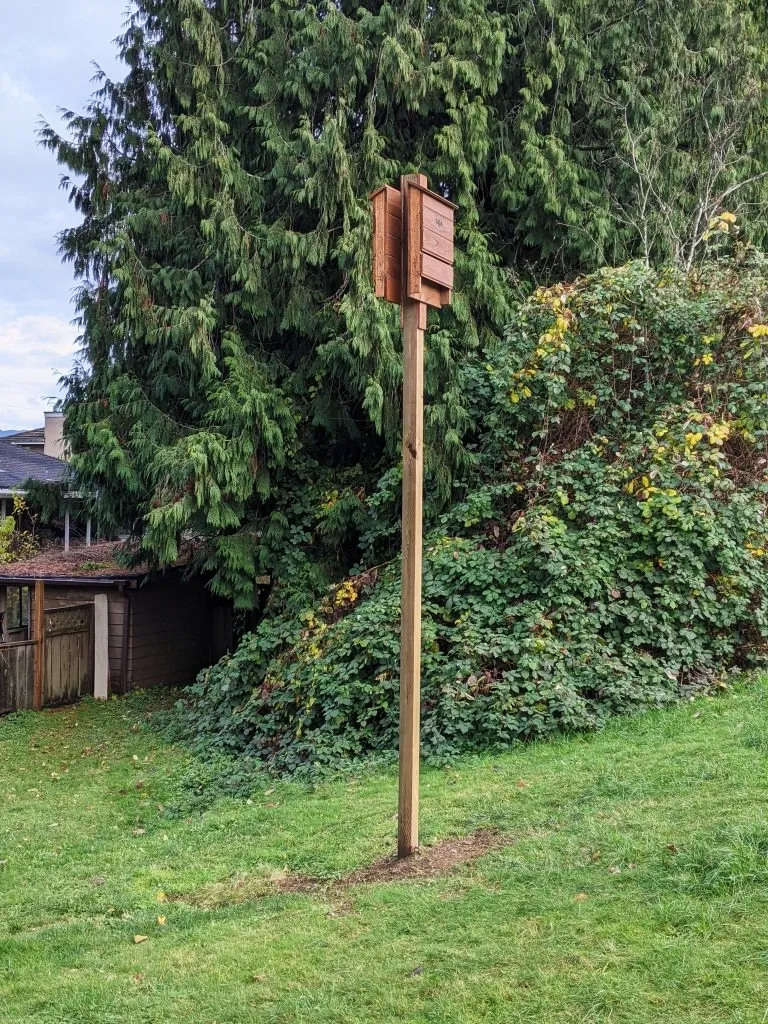
Because bats feed on the wing, and do not roost near the ground, their becoming entangled in burdock must be extremely rare. Will you comment on my observation, please. Saying that, I don’t think that plant has any redeeming features.